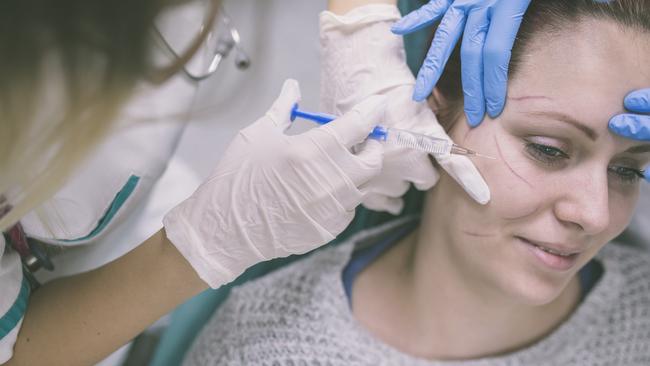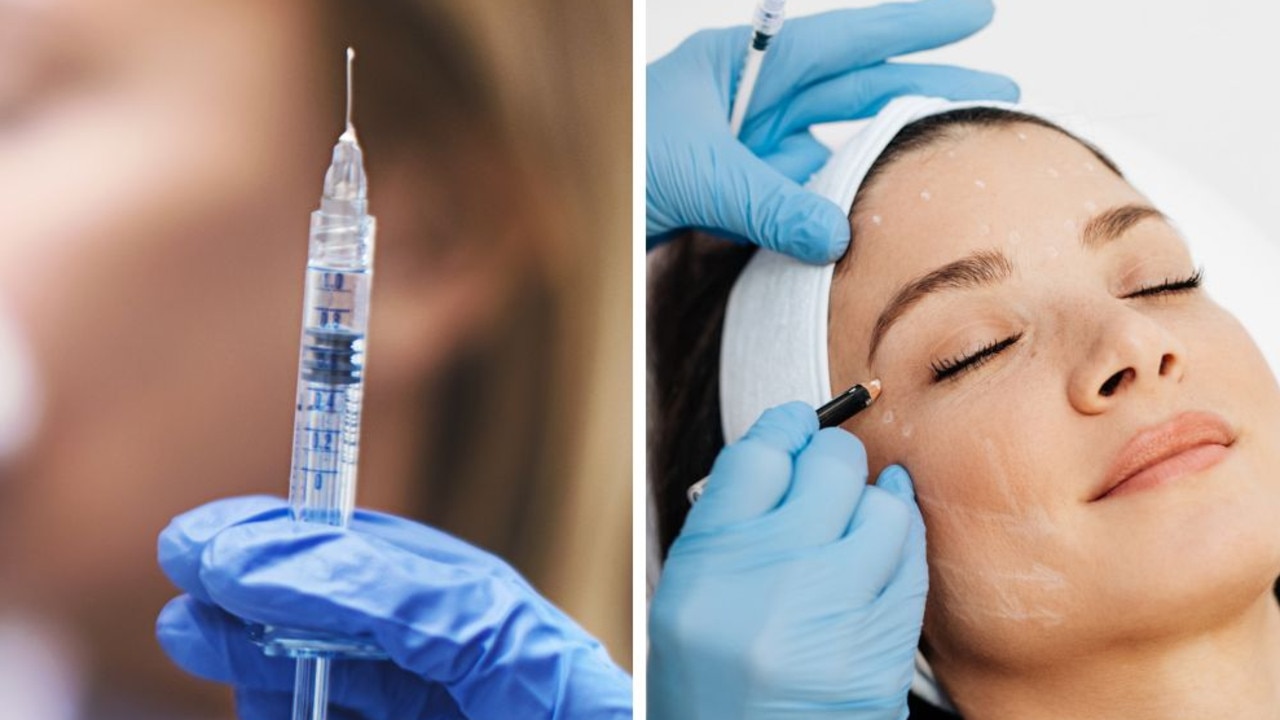Australian Society of Plastic Surgeons warns fillers can cause blindness
COSMETIC injections are becoming as commonplace as getting a mani-pedi, but the top plastic surgeon’s body says they’re super dangerous, even deadly.

AUSTRALIA’S top plastic surgeons are warning fans of our $1 billion cosmetic surgery industry about the risk of blindness from injectable fillers.
In a world where cosmetic injections are as common as getting a manicure or an eyebrow wax, there is concern our growing complacency about their potential danger has caused a jump in the number of damaging procedures.
“With the increase in use has been an associated downgrading of the risks that come with hyaluronic acid fillers,” Australian Society of Plastic Surgeons (ASPS) president Mark Ashton told news.com.au.
Most fillers contain hyaluronic acid, a substance that occurs naturally in the body and assists with hydration. It’s also a common ingredient in anti-ageing skincare products.
“We just want to explain to patients that having fillers is not a trivial exercise. It carries significant complications. There’s been over 100 cases of blindness [according to a 2015 study] and that’s probably a conservative estimate,” Prof Ashton said.
“Cosmetic surgery is real surgery and people die from this.”

A new study out this week from South Korea, which has the highest number of plastic and cosmetic procedures per capita in the world, examined nine patients who experienced vision loss after being injected with fillers.
“All nine patients were female, ranging in age from 26 to 45 years and in all cases hyaluronic acid fillers were injected by doctors, including board-certified plastic surgeons and dermatologists,” said the study from Seoul National University, which was published in the Journal of the American Society of Plastic Surgeons.
“Improvement of visual acuity [clarity] in patients with vascular occlusion [blood clots] after filler injection is extremely rare, and there has been no total recovery of vision after initial injury.”
Prof Ashton said blindness from filler can occur following an injection anywhere on the face, not just around the delicate eye area. Even lip injections, which are hugely popular among young women, can cause blindness.
“If you get inadvertent injection of filler in any part of the facial artery, that can travel along the artery all the way up to the corner of the eye and then that goes into the retina,” he said.
“The blindness is instantaneous and permanent and can be one or both eyes. No one has been able to successfully fix that blindness.”
As well as blindness, injecting filler into a facial artery can cause soft tissue damage, “killing” certain parts of the face.
“If you inject it and it goes into your [facial] artery, it can kill the tissue and the cartilage of the nose,” Prof Ashton said.
“There are images of people’s noses turning black and falling off. People have had their forehead, cheeks and lips all die just from having this treatment injected.”
There are fewer risks associated with Botox, the brand name for Botulinum toxin, which paralyses the muscles and lasts for around three months.
“If you inject Botox into an artery, there isn’t any evidence of that resulting in soft tissue death or blindness,” Prof Ashton said.
The ASPS recommends patients do their research and select a qualified surgeon who has extensive knowledge of the vascular system.
Australia’s total annual expenditure on cosmetic surgery procedures and treatments in Australia is estimated to be $1 billion, according to 2015 data from the Australasian College of Cosmetic Surgery.
We consume more than $350 million worth of wrinkle reduction procedures with botulinum toxin annually. There are approximately 8000 breast augmentation surgeries performed and about 30,000 liposuction procedures.
The most popular cosmetic procedures are anti-wrinkle injections, fillers, lasers and IPL (intense pulsed light), breast augmentation or reduction, and liposuction.
rebecca.sullivan@news.com.au



